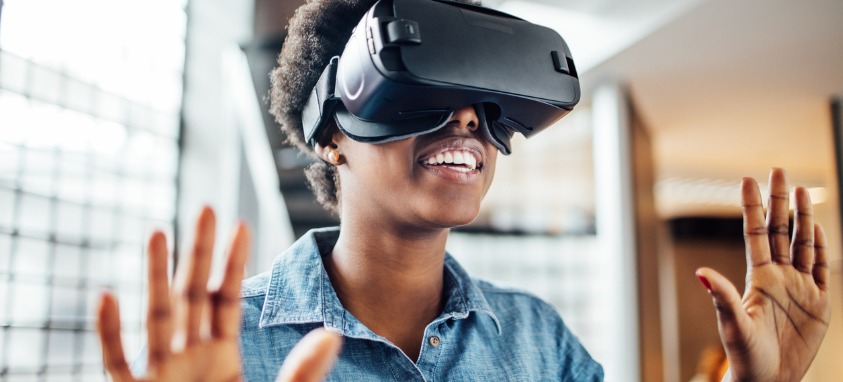How 3D technology could bring more people to the meeting room
If your mind, like mine, inevitably went to the 1970 Edwin Starr song, then the only natural response is, “Absolutely nothin’ (say it again!).” And for the most part, that’s exactly the attitude that the event industry has had when it comes to virtual reality (VR). Basically, it was relegated to the same category as golf simulators, oxygen bars and vodka luges: a fun activity stuck in the corner of a reception or afterparty, but certainly not the primary focus. After all, events are about making connections between people, right? And how can you connect with people if you’ve got a stupid VR helmet on? It’s an individual, isolated experience—not a group activity, right?
Oh sure, there were a few brave souls. For years, my presentations featured a cool Audi event where over 50 attendees were brought into a smartly designed modern space and given VR headsets. They were instructed to put them on all at once, and simultaneously viewed a gorgeous roller-coaster of a ride, highlighting the features of the new vehicle. Once the VR segment ended, the group was invited to remove their headsets, only to discover that one wall of the space had been removed, and the actual vehicle was there to be inspected, along with cocktails.
What’s interesting to me wasn’t so much the technology, but that during the VR portion, the guests were laughing, holding hands and enjoying a group experience. Soon after, other event organizers were synching 100, even 1,000 headsets to simultaneously deliver a VR experience to groups, to rave reviews. A few saw the marketing potential of VR. A handful of hotels and venues started putting together immersive walkthroughs of their spaces that could be viewed in VR. Branded cardboard headsets that you could drop any phone into could be mailed to any potential customer or handed out at a trade show, significantly lowering the bar to entry-level VR.
Yet despite these successes, event folks continued to shun the technology. Sure, there were advancements, slowly, and each year VR has been utilized more in the industry, but it’s just a fraction of a fraction of meetings and events.
The VR Value Prop
Is this starting to sound familiar to anyone? It should, because it’s the exact slow, plodding path we were on with online events before the Covid-19 pandemic. Once we went into lockdown as an industry and were forced to use online event technology, only then did advancement explode in that category. While it’s unlikely there will be some great catastrophe that causes all events to move exclusively to VR (*looks around for some wood to knock on*), the seismic shift that 2020 created will no doubt spill over into other technologies like VR.
While most of us are looking forward to seeing old friends and giving them a hug, there can be no doubt that 2020 forever changed how we look at events. Most significantly, many people and organizations realized that not every meeting needs to be in person. People are going to be more selective in choosing when they want to attend in person, and when they might want to stay home and take it in via livestream.
This “do I really need to be there” choice will naturally cause an increased interest in VR, as organizers look for new ways to reach the stay-at-home audience.
Here are a few things to keep an eye out for.
• Hybrid VR experiences: Expansion of group VR to hybrid audiences, allowing both in-person and remote audiences to literally share the same VR experience.
• Mixed reality: Look for more marketing activations. For online and hybrid events, we’ll see more presenters in a studio or in-person event who are layered into an immersive, 3D, computer-generated environment for VR participants.
• Virtual site visits: Even pre-Covid, these were becoming more popular as a way to reduce travel and environmental impact. Even if you can eliminate just one of your potential site options based on a VR tour, it could save your organization thousands of dollars in airline tickets and time out of the office, and significantly reduce environmental impact due to air and ground travel.
• Avatar-based conferences and events: We’ve already seen an increase in this type of technology in our online events, and while it’s not right for every group of attendees, some love it. Taking it into VR is the next logical step.
• Expo and trade show equipment demos: In another sustainability move, many exhibitors are reducing the amount of product and equipment needed on the show floor by presenting it in VR. Instead of thousands of glossy pamphlets of your Caribbean resort, you can show them what it looks like from the lobby balcony looking out over the sea.
It’s important to remember no one is saying VR can replace the experience of being there in person. These experiences are just…different. There are advantages to staying at home and attending online that may outweigh the advantages of being there in person for many in your audience. VR could be a valuable part of that experience.




